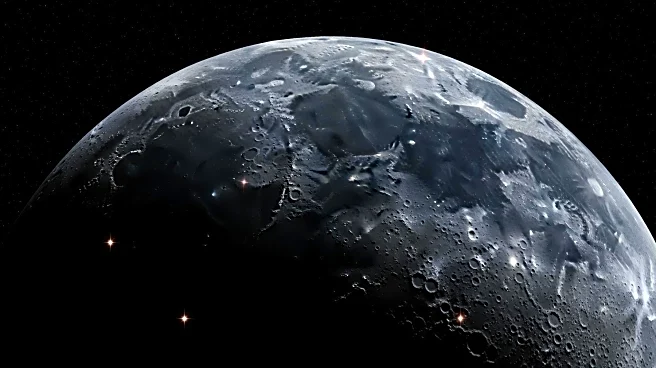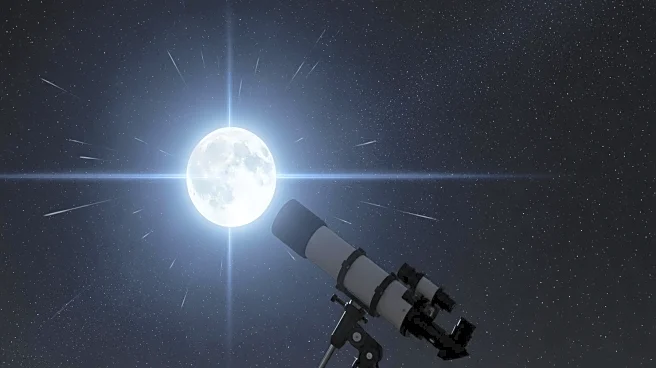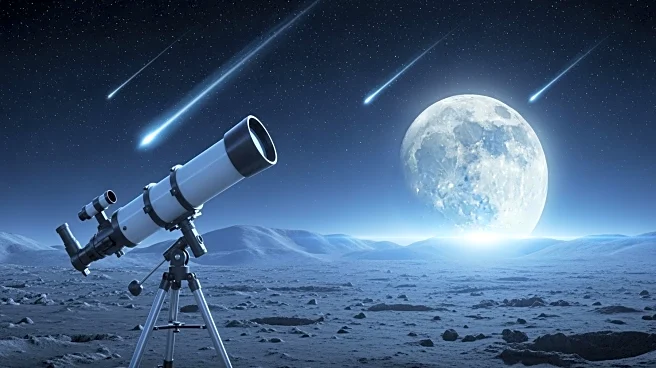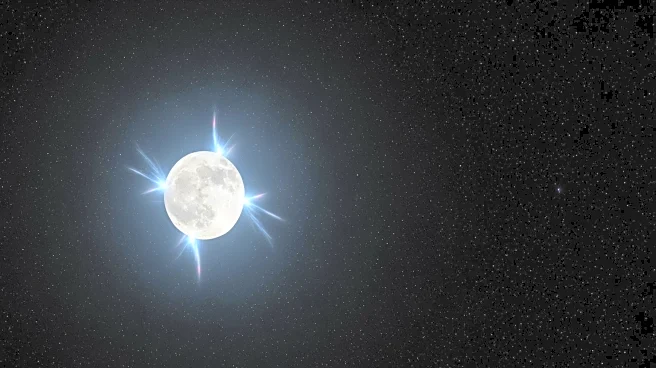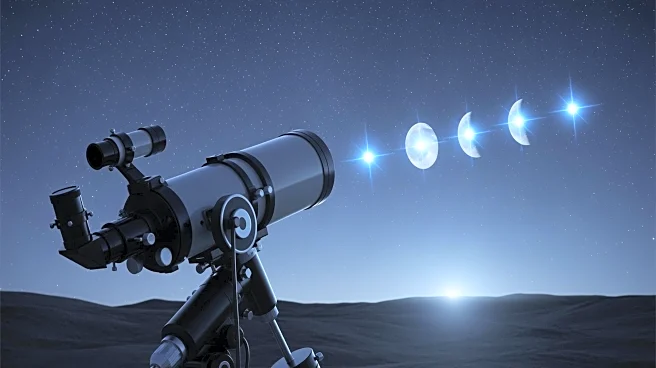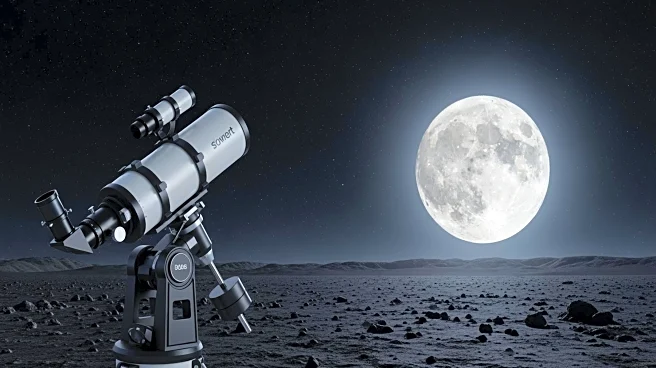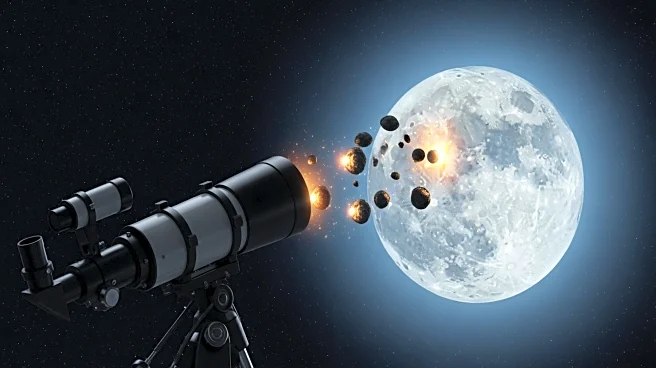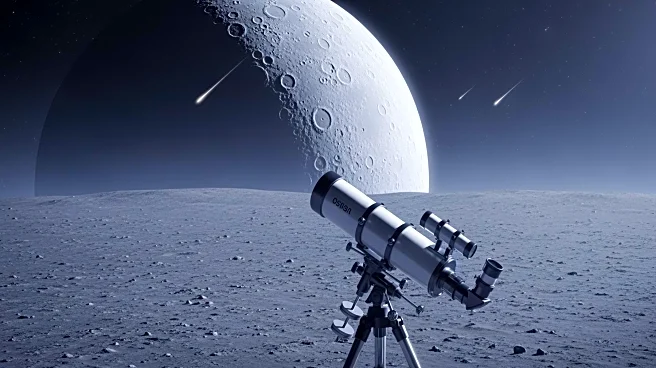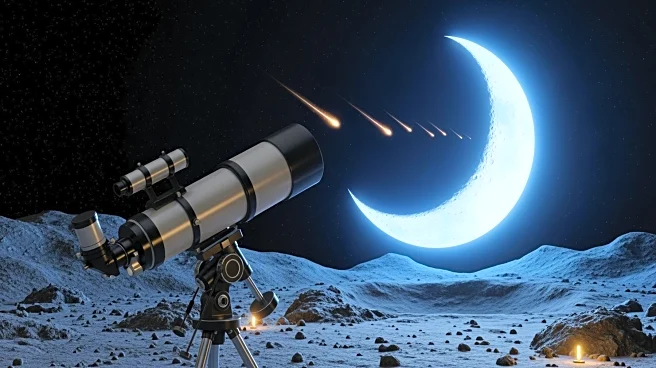What's Happening?
Astronomer Daichi Fujii, curator of the Hiratsuka City Museum in Japan, has captured two mysterious flashes on the moon's surface, leading to speculation about their origins. The first flash was observed
on October 30, followed by a second on November 1. These flashes are believed to be impacts from space rocks associated with the Taurid meteor shower, which occurs annually around late October and early November. The Taurid meteor shower is caused by Earth passing through debris left by the comet Encke, resulting in visible shooting stars. Fujii's observations were made using telescopes equipped with special equipment to detect motion and explosions on the lunar surface. Over the past 15 years, Fujii has recorded nearly 60 impacts on the moon, with these recent observations being particularly rare due to their back-to-back occurrence.
Why It's Important?
The detection of these flashes is significant as it highlights the ongoing interactions between celestial bodies and space debris. The Taurid meteor shower, while typically harmless to Earth due to its atmosphere, poses a different threat to the moon, which lacks atmospheric protection. The impacts on the moon provide valuable data for astronomers studying meteor showers and their potential risks. Furthermore, research suggests that the Taurid meteor shower could pose a greater threat to Earth in the coming decades, with larger meteor fragments potentially causing hazardous air bursts or ground impacts. This underscores the importance of continued monitoring and research to understand and mitigate potential risks from space debris.
What's Next?
Future observations and studies will focus on the Taurid meteor shower's potential risks, particularly around 2032 and 2036 when larger meteor fragments may pose a threat due to gravitational influences from Jupiter. Researchers will continue to monitor these events to better predict and prepare for possible impacts. The scientific community may also explore technological advancements to improve detection and tracking of space debris, enhancing our ability to respond to potential threats.
Beyond the Headlines
The flashes on the moon serve as a reminder of the dynamic nature of our solar system and the constant movement of celestial bodies. The study of meteor impacts on the moon can provide insights into the history and evolution of lunar surfaces, as well as the broader implications for planetary defense strategies. Ethical considerations may arise regarding the allocation of resources for space monitoring and the prioritization of research efforts in the face of potential threats.
